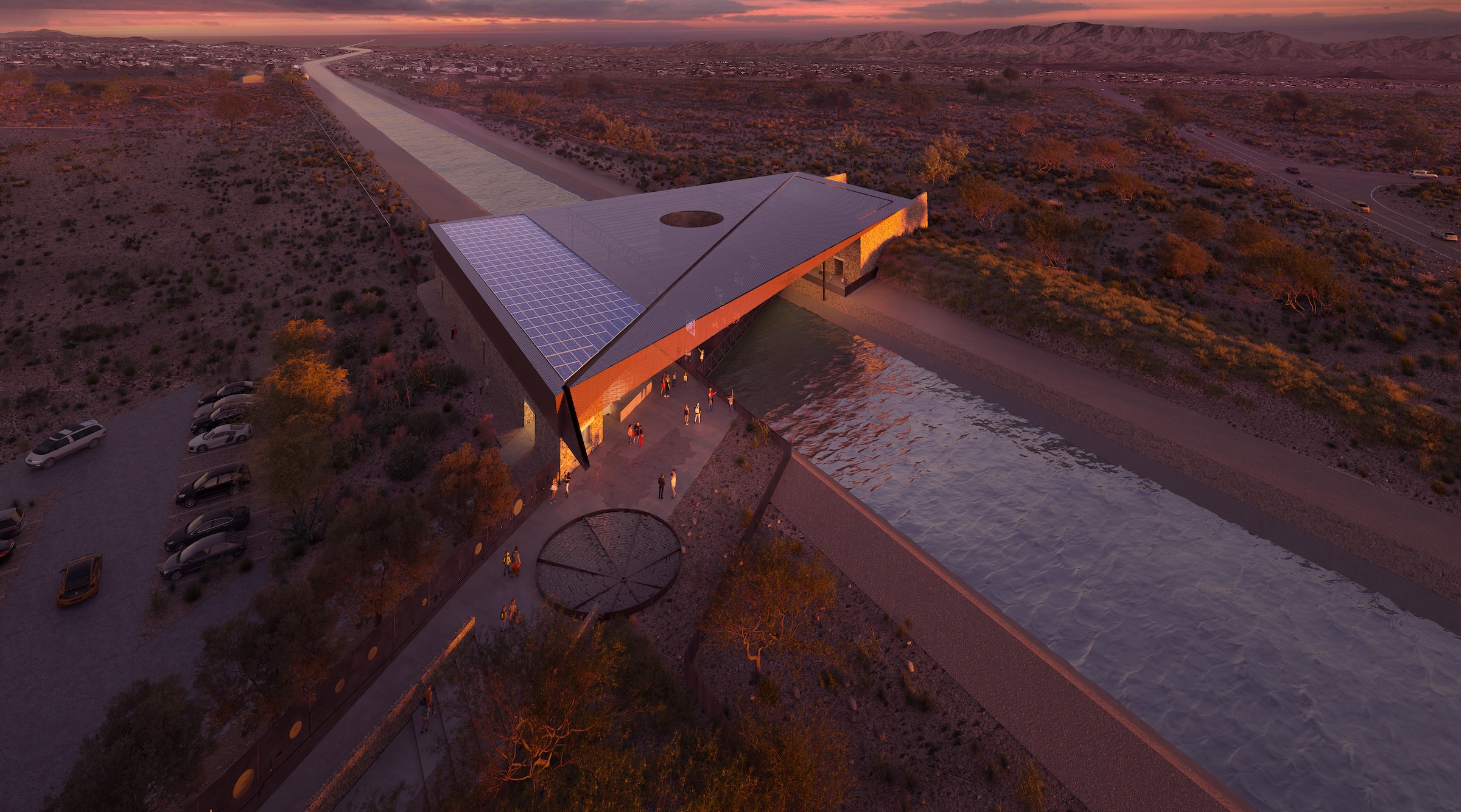Phoenix-based architecture firm Jones Studio will design the Water Education Center for Central Arizona Project (CAP)—a 336-mile aqueduct system that delivers Colorado River water to almost 6 million people, more than 80% of the state’s population.
The Center will allow the public to explore CAP’s history, operations, and impact on Arizona. With safe, up-close views of the canal, the space aims to enable a larger audience to understand CAP and how it fits into Arizona’s history. The Water Education Center also will host gatherings such as large water-stakeholder meetings, elected official briefings, and school field trips.
The Colorado River Basin is experiencing the effects of a decades-long drought and climate change, and Arizona has been experiencing a Colorado River shortage since 2021. Located at CAP’s headquarters, the new 8,000-sf, net-zero water facility emphasizes climate resilience and features onsite stormwater harvesting and passive rainwater harvesting from the building. The architecture and landscape will be used as pedagogical tools to illustrate innovative water conservation and reuse strategies.
“With this new Water Education Center, we endeavor to create an extremely energy- and resource-efficient building that embodies and expresses sustainable technologies,” Brian Farling, principal of Jones Studio, said in a statement.
Design ideas include a weathered steel cylinder embedded in the earth that acts as a sculptural catch basin for stormwater. In the entry plaza, a diagram of the Colorado River watershed, highlighting the CAP canals and prominent rivers, will educate visitors about the water system’s footprint.
Flexible multipurpose spaces and educational exhibit spaces will open to an outdoor gathering space that bridges the canal. A 27,000-sf canopy will protect visitors from the desert sun and collect rainwater for reuse. Traditional passive design strategies, such as thermal mass and self-shading, will be supplemented by a 6,000-sf photovoltaic array.
On the Building Team:
Owner: Central Arizona Project (CAP)
Design architect and architect of record: Jones Studio
Mechanical and plumbing engineer: Associated Mechanical Engineers
Electrical engineer: Woodward Engineering
Structural engineer: Rudow + Berry

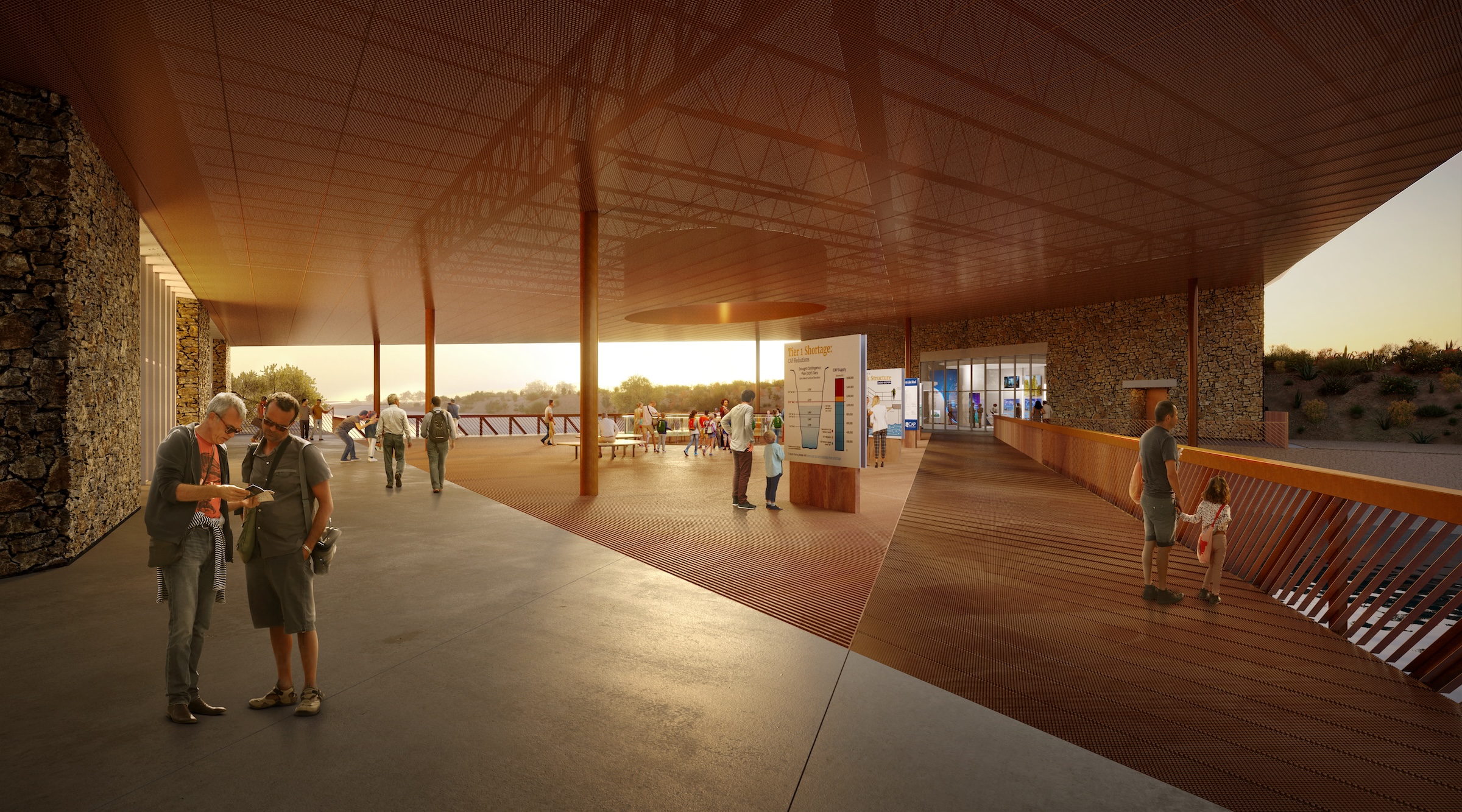
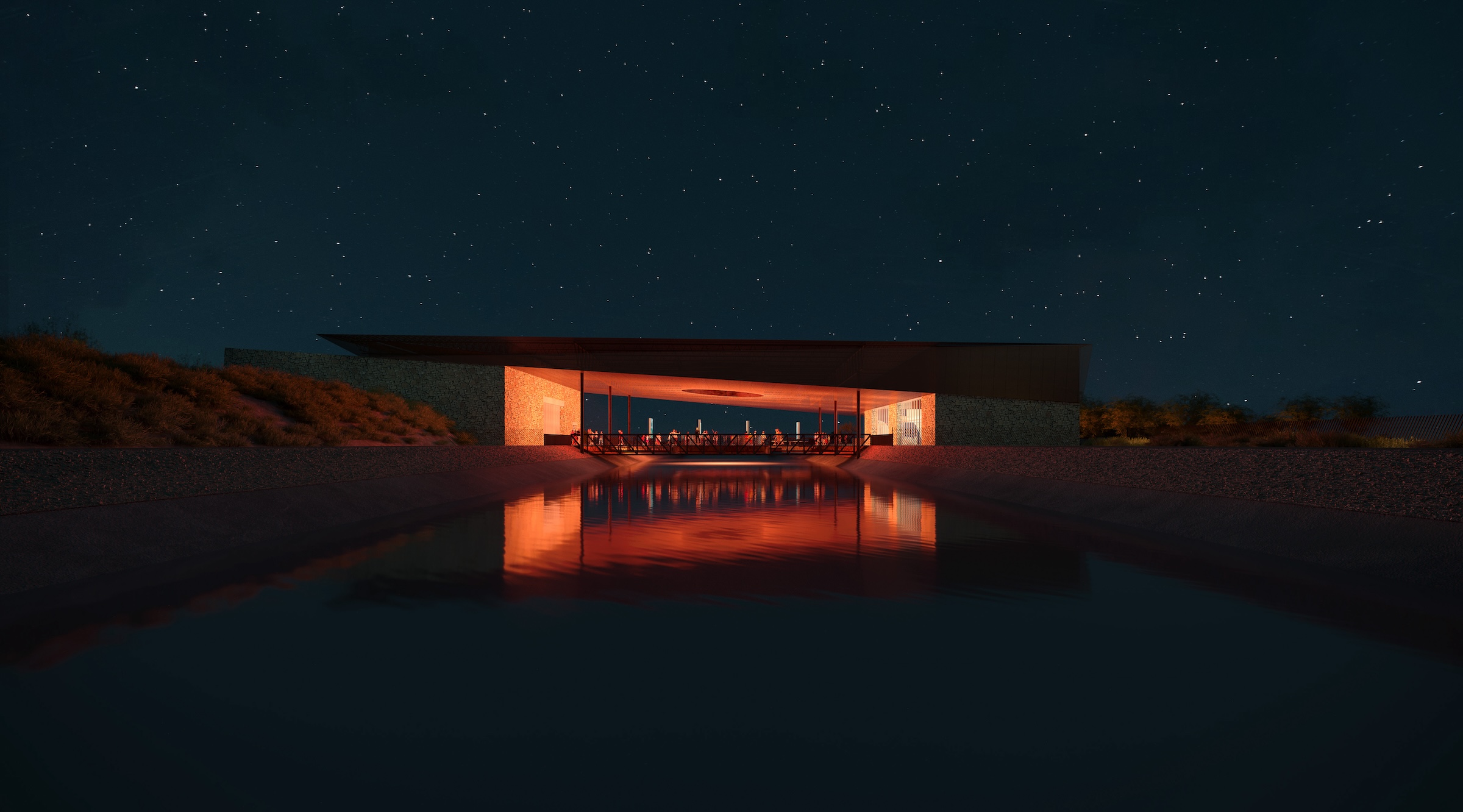

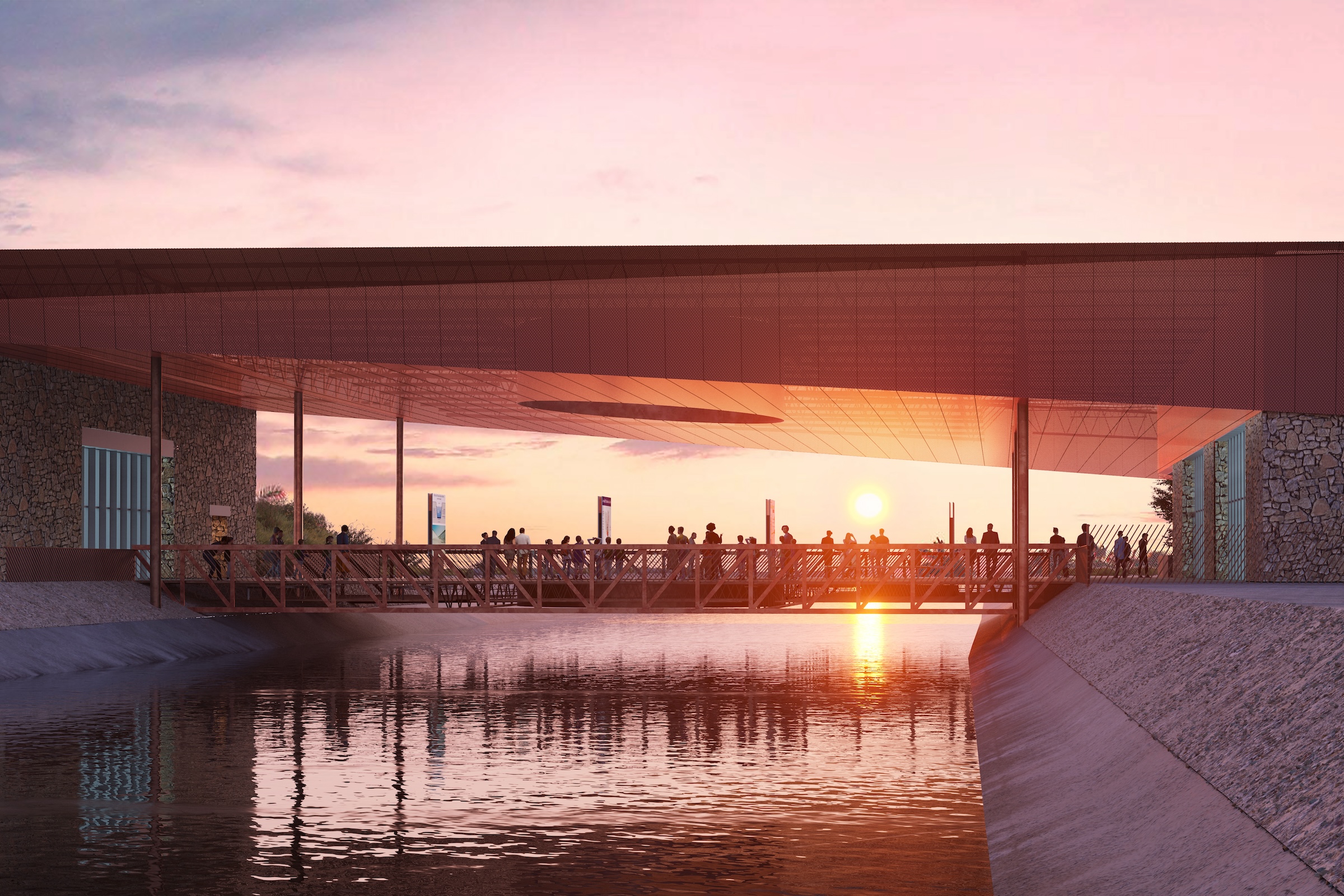
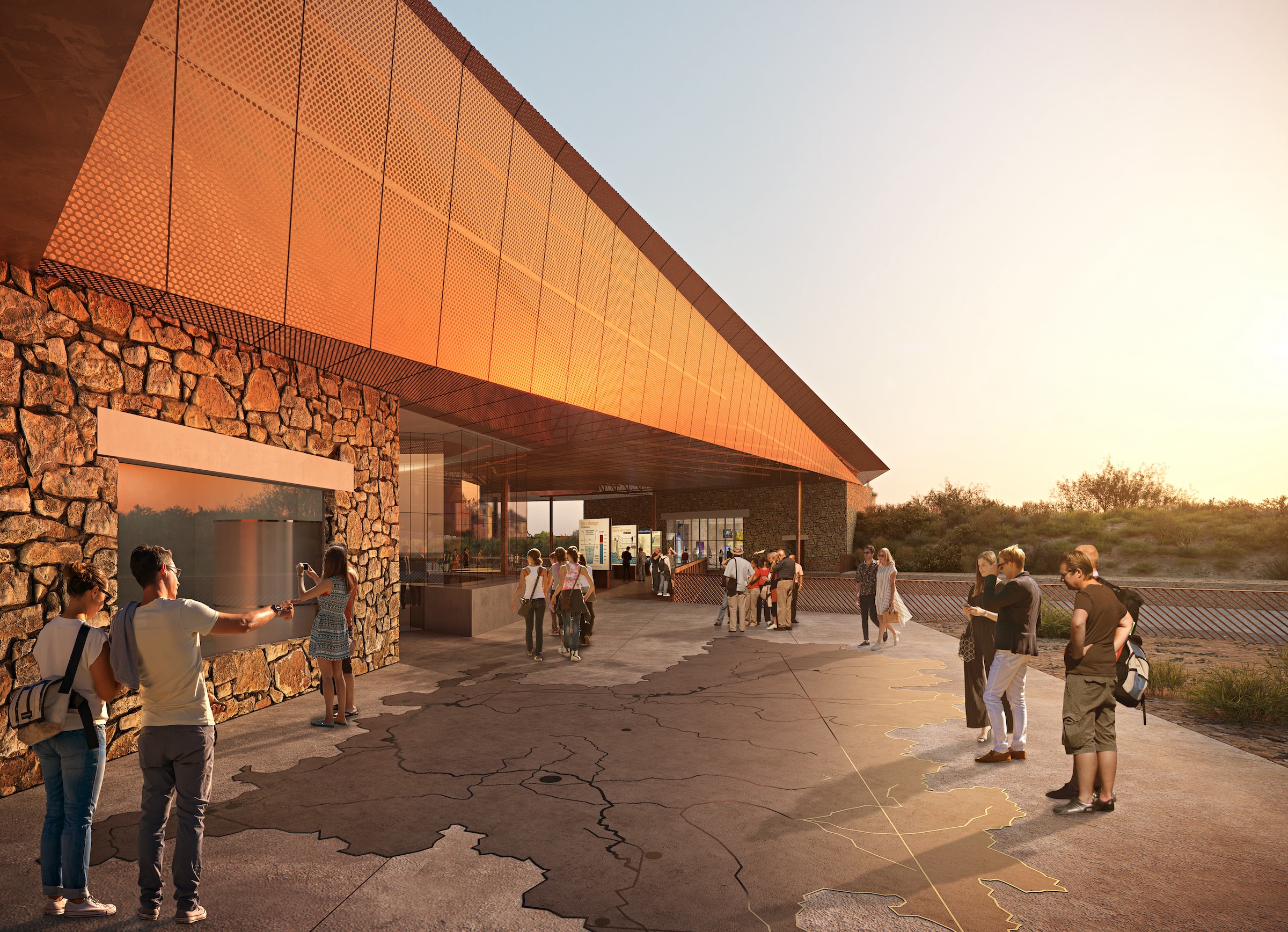
Related Stories
| Aug 11, 2010
Biograph Theater
Located in Chicago's Lincoln Park neighborhood, Victory Gardens Theater Company has welcomed up-and-coming playwrights for 33 years. In 2004, the company expanded its campus with the purchase of the Biograph Theater for its new main stage. Built in 1914, the theater was one of the city's oldest remaining neighborhood movie houses, and it was part of Chicago's gangster lore: in 1934, John Dillin...
| Aug 11, 2010
Top of the rock—Observation deck at Rockefeller Center
Opened in 1933, the observation deck at Rockefeller Center was designed to evoke the elegant promenades found on the period's luxury transatlantic liners—only with views of the city's skyline instead of the ocean. In 1986 this cultural landmark was closed to the public and sat unused for almost two decades.
| Aug 11, 2010
Putting the Metal to the Petal
The Holocaust and Human Rights Center of Maine was founded in 1985, but the organization didn't have a permanent home until May 2008. That's when the Michael Klahr Center, which houses the HHRC, opened on the Augusta campus of the University of Maine. The design, by Boston-based architects Shepley Bulfinch Richardson & Abbott, was selected from among more than 200 entries in a university-s...
| Aug 11, 2010
Jefferson Would Be Proud
The Virginia State Capitol Building—originally designed by Thomas Jefferson and almost as old as the nation itself—has proudly served as the oldest continuously used Capitol in the U.S. But more than two centuries of wear and tear put the historical landmark at the head of the line for restoration.
| Aug 11, 2010
Let There Be Daylight
The new public library in Champaign, Ill., is drawing 2,100 patrons a day, up from 1,600 in 2007. The 122,600-sf facility, which opened in January 2008, certainly benefits from amenities that the old 40,000-sf library didn't have—electronic check-in and check-out, new computers, an onsite coffeehouse.
| Aug 11, 2010
American Tobacco Project: Turning over a new leaf
As part of a major revitalization of downtown Durham, N.C., locally based Capitol Broadcasting Company decided to transform the American Tobacco Company's derelict 16-acre industrial plant, which symbolized the city for more than a century, into a lively and attractive mixed-use development. Although tearing down and rebuilding the property would have made more economic sense, the greater goal ...
| Aug 11, 2010
Bronze Award: Alumni Gymnasium Renovation, Dartmouth College Hanover, N.H.
At a time when institutions of higher learning are spending tens of millions of dollars erecting massive, cutting-edge recreation and fitness centers, Dartmouth College in Hanover, N.H., decided to take a more modest, historical approach. Instead of building an ultra-grand new facility, the university chose to breathe new life into its landmark Alumni Gymnasium by transforming the outdated 99-y...
| Aug 11, 2010
Fleet Library, Rhode Island School of Design
When tasked with transforming an early 1920s Italian Renaissance bank building into a fully functional library for the Rhode Island School of Design, the Building Team for RISD's Fleet Library found itself at odds with the project's two main goals. On the one hand, the team would have to carefully restore and preserve the historic charm and ornate architectural details of the landmark space, d...
| Aug 11, 2010
Gold Award: The Lion House, Bronx Zoo Bronx, N.Y.
Astor Court sits at the heart of the 265-acre Bronx Zoo, and its six Beaux Arts buildings were constructed at the turn of the 20th century to house exotic animals from around the world. When the Lion House was built in 1903, the brick and limestone facility was considered state-of-the-art, but as standards of animal care advanced, the lions were moved into a more natural setting, and the Lion H...
| Aug 11, 2010
The pride of Pasadena
As a shining symbol of civic pride in Los Angeles County, Pasadena City Hall stood as the stately centerpiece of Pasadena's Civic Center since 1927. To the casual observer, the rectangular edifice, designed by San Francisco Classicists John Bakewell, Jr., and Arthur Brown, Jr., appeared to be aging gracefully.


